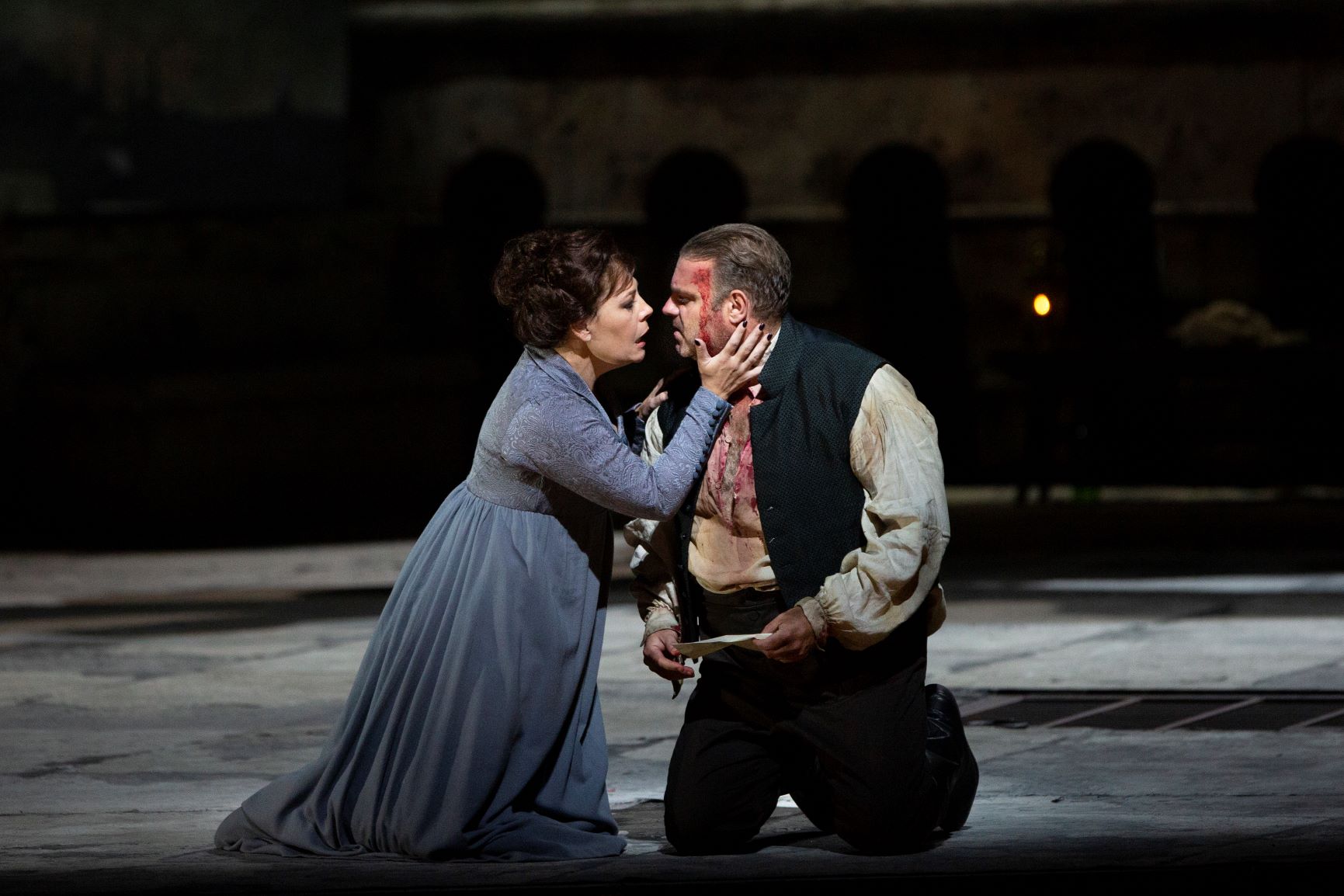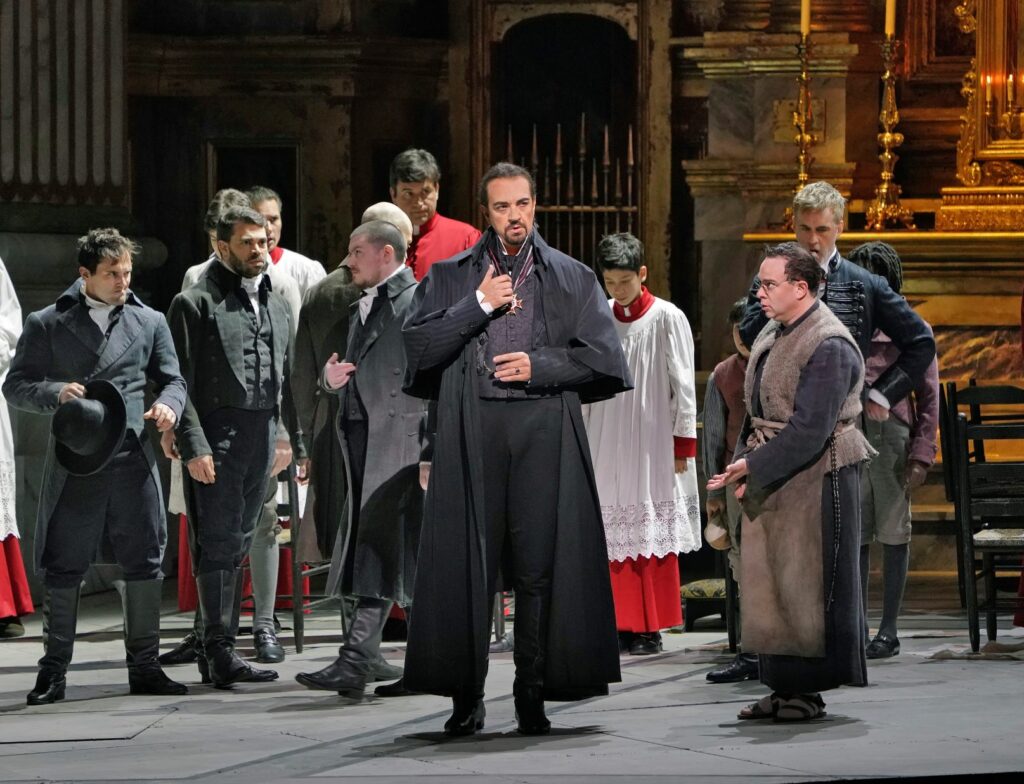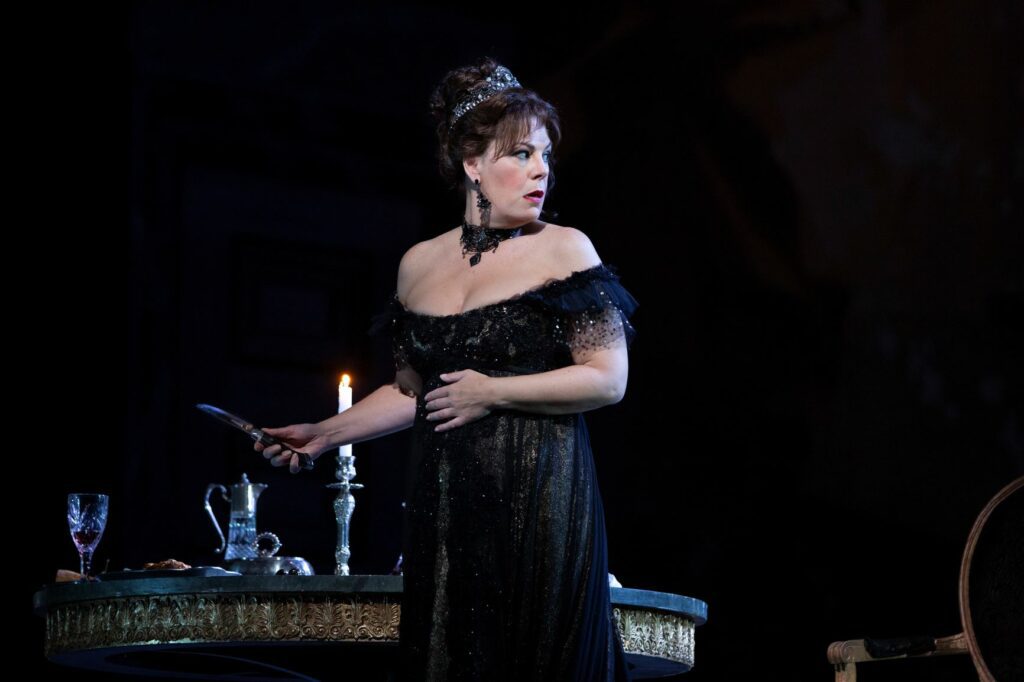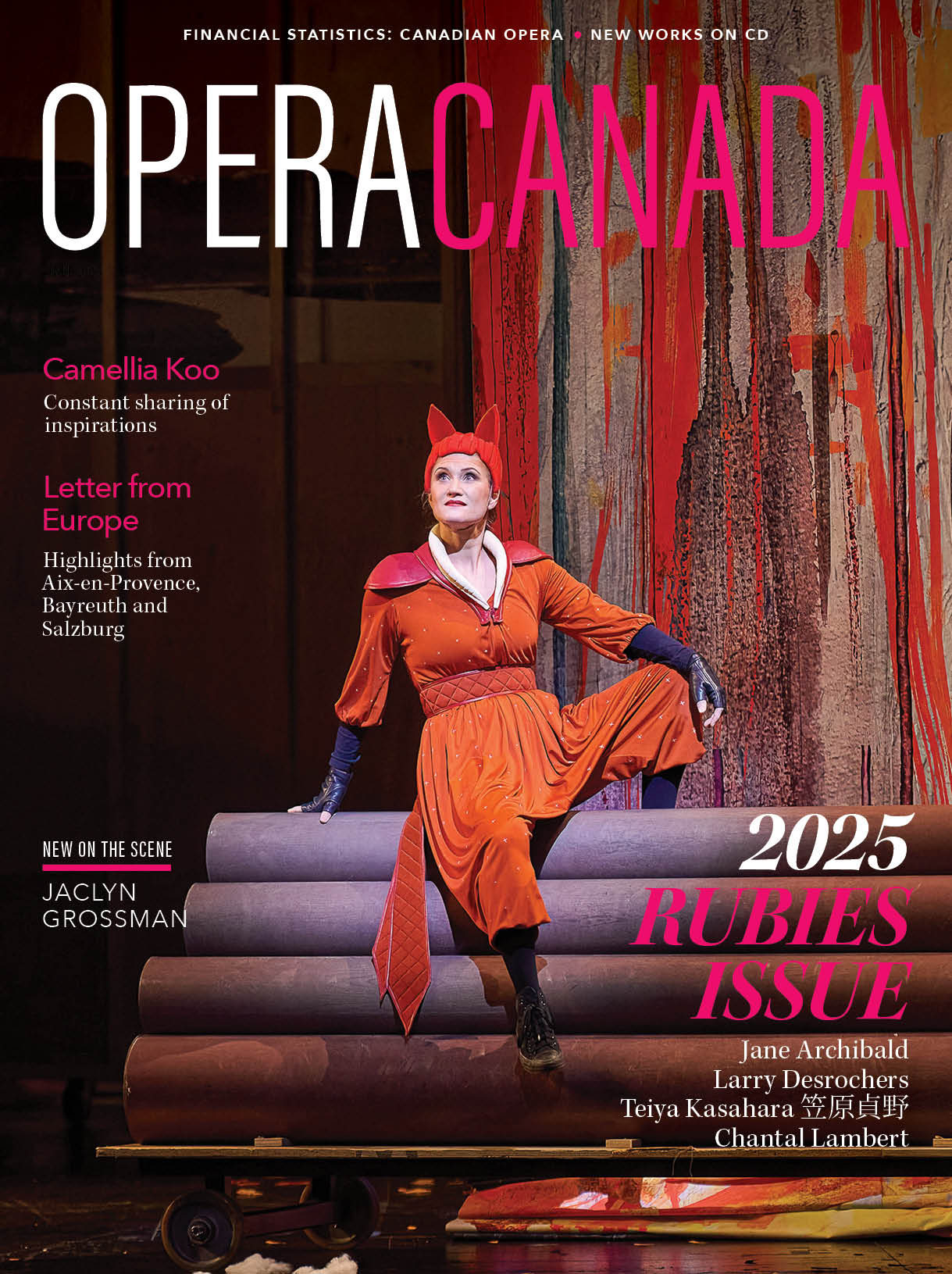There’s almost always a certain splashy excitement attendant on a new production’s opening night, but sometimes it’s the next season’s revival that delivers the greater musical and dramatic punch. That’s what happened with Metropolitan Opera‘s Tosca, unveiled on New Year’s Eve, 2017 (I saw it a week later); accorded a second cast in the spring (I heard a broadcast), and now, the following fall, given its first performances of the new season (I was there on Nov. 5th, US midterm election eve, a politically anxious day perfect for this opera).
I very much liked that new Tosca, in large part because it wasn’t the ugly ‘old’ (vintage 2009) Luc Bondy production, perversely determined to strip the opera of all its almost-built-in tradition, including the stage directions so meticulously observed in Puccini’s score. But David McVicar’s staging, as his work so often does, happily asserted that “tradition” isn’t necessarily the last bad performance, as some would have it, but can just as well be the last really good one. In easy partnership with John Macfarlane’s handsomely evocative set and costume designs, McVicar created a Tosca that likely wouldn’t have displeased the composer, Illica and Giacosa (his librettists), or Sardou (their theatrical source) but was cheeringly embraced, too, by an audience of thrill-receptive New Yorkers.
No, the prime problem with last season’s Toscas wasn’t the production but, rather, its Toscas: both Sonya Yoncheva (winter) and Anna Netrebko (spring) were singing their very first performances of the deceptively tricky role, and while both offered vocal pleasure and much plush tone, neither seemed fully ‘there’ yet; both promised more than they actually delivered. That was far from the case with Sondra Radvanovsky, this season’s prima donna. A veteran of two memorable runs in Bondy’s staging (the first of which, in the winter of 2011, offered another sterling instance of a next-season revival surpassing a premiere), Radvanovsky knows exactly what she’s doing from moment to moment; and though I’ve heard her sing the role better—she seemed on occasion a little under-powered, by her standards, in mid-range, and she’s sung “le voci delle cose” in the Act I duet with greater finesse—let me stress that it’s only ‘by her standards’ that she falls short of the recent best: she’s still the most vocally commanding, most complete, most emotionally nuanced Tosca of the past two or three decades.
And she enjoyed her finest partnership yet with her two leading men. Joseph Calleja was simply the most refulgent-voiced Cavaradossi the Met has enjoyed in many a year, from honeyed, gently inflected arias in the outer acts to a ringing, prolonged B-flat celebrating “Vittoria!” in Act II. And the entrance of the evening’s Scarpia, the unfamiliar Claudio Sgura, prompted a gasp from more than one audience member: taller than just plain tall, he instantly commanded the stage with smoothly sardonic relish; and if he seemed a little vocally gray in Act I, he rose nimbly and firmly to the demands of Act II, where he and Radvanovsky repeatedly provoked chills.
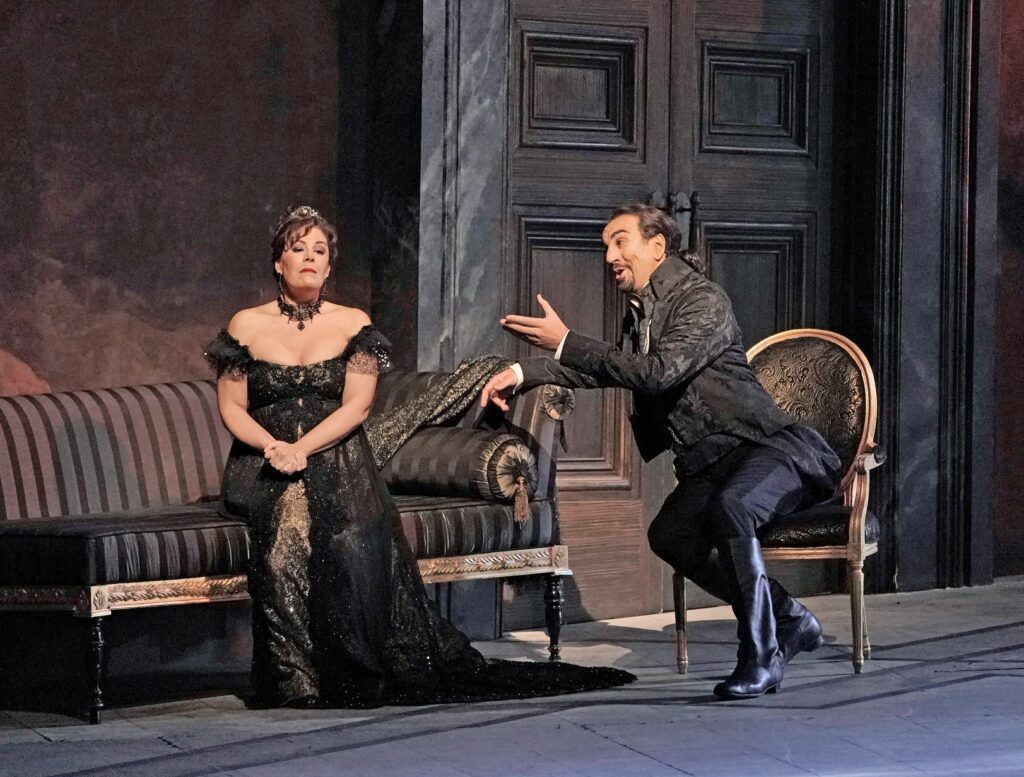
Sondra Radvanovsky (Tosca) and Claudio Sgura (Scarpia) in The Metropolitan Opera’s Tosca. Photo: Ken Howard/Metropolitan Opera
Carrying over their fine work from last season, Patrick Carfizzi (the Sacristan) and Brenton Ryan (Spoletta) adeptly hit their, respectively, comic and chilling marks; and a conductor new to the production, Carlo Rizzi, showed himself a master Puccinian, even if he indulged in a now-and-then overenthusiastic pumping-up of the decibels. At evening’s end, I felt a sharp pang of nostalgia for the good old days at the Met, when curtain calls went on nearly as long as the audience demanded, with only the descent of the fire curtain curtailing the cheers. This Tosca deserved a good ten minutes more.

